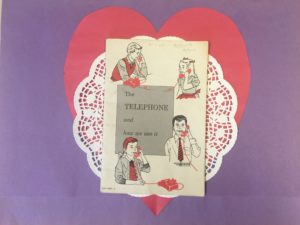Company Information

Godstruck Ministries, LLC
Website:
https://godstruckkids.comAddress:
8180 Talon Ct Falcon, CO, 80831, United States.Latitude: 38.951664N
Longitude: 104.633211WEmail:
kim@godstruckkids.comContact:
Customer Service: +1 (719) 684-4817Opening Hours:
Mo 9:00-17:00Tu 9:00-17:00We 9:00-17:00Th 9:00-17:00Fr 9:00-17:00Sa 9:00-15:00Recent Comments
- Sheri on The One Who is the Rock
- Andreia on True Celebration
- Sarah D. on True Celebration
- Danielle F on Inner Beauty
- christianmotherof5 on Know Him Through His Word
- Autumn Jones on True Celebration
 0 items
0 items
 It is no secret that in this world filled with technology, we living in relative prosperity have become attached AND distracted by said technology. As I am writing in a busy airport terminal, in row after row of passengers I see screens of every type. Viewing cell phones, e-readers, and tablets, very few people are engaged in conversation with each other, though I will say there is a din (travelers likely in momentary discussions over seat assignments, delays, or where to find a good cup of coffee). It is apparent that while we may be sitting within spitting distance of family and friends, let alone people with whom we are unfamiliar, people in general, and particularly this younger generation, are more likely to have Herculean-strength thumbs from tapping a cell phone all day than they are able to engage in meaningful conversation for more than a nanosecond (likely to ask if they can plug into a shared outlet). It goes without saying, but I’m going to say it anyway—what a changed world we live in! Yes, I know that in many ways there are benefits and betterments. But there are also many things we are losing due to the technological advances society has made, especially in the last fifty years.
It is no secret that in this world filled with technology, we living in relative prosperity have become attached AND distracted by said technology. As I am writing in a busy airport terminal, in row after row of passengers I see screens of every type. Viewing cell phones, e-readers, and tablets, very few people are engaged in conversation with each other, though I will say there is a din (travelers likely in momentary discussions over seat assignments, delays, or where to find a good cup of coffee). It is apparent that while we may be sitting within spitting distance of family and friends, let alone people with whom we are unfamiliar, people in general, and particularly this younger generation, are more likely to have Herculean-strength thumbs from tapping a cell phone all day than they are able to engage in meaningful conversation for more than a nanosecond (likely to ask if they can plug into a shared outlet). It goes without saying, but I’m going to say it anyway—what a changed world we live in! Yes, I know that in many ways there are benefits and betterments. But there are also many things we are losing due to the technological advances society has made, especially in the last fifty years.


